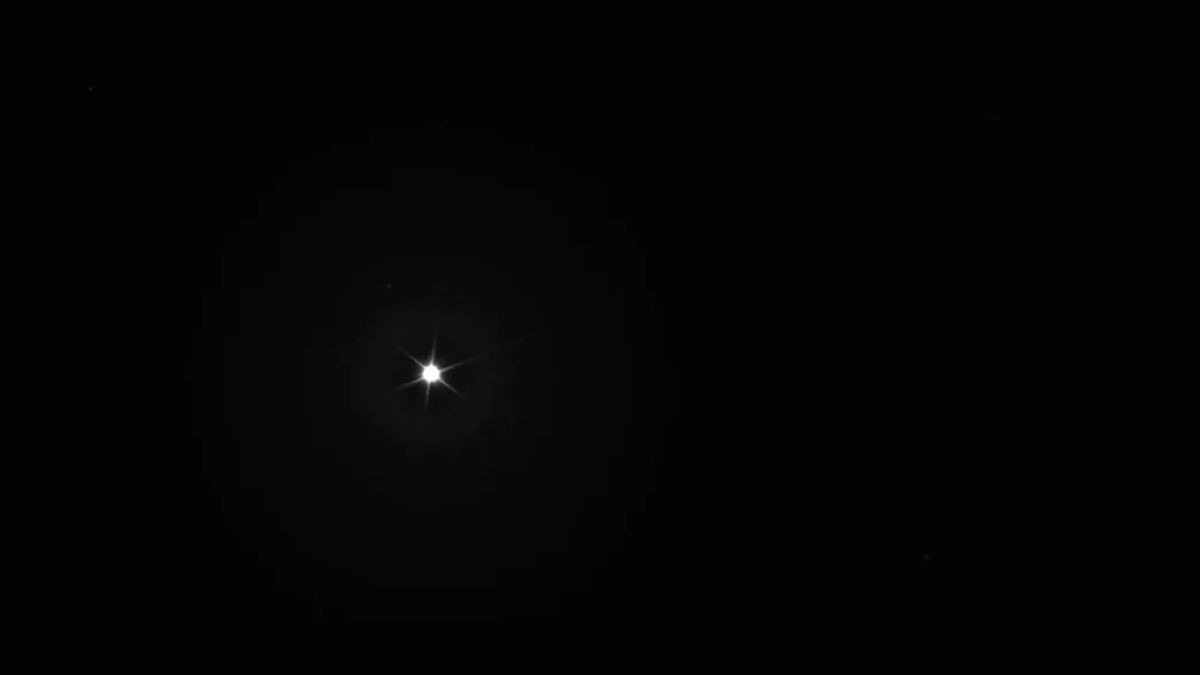NASA’s (DART) camera recently focused on another stunning spectacle: Jupiter and its four largest moons
The single instrument on DART is DRACO. As a result, it will be able to take pictures of Didymos and Dimorphos as well as allow small-body autonomous real-time navigation (SMART Nav). DART will be guided to impact by the spacecraft’s autonomous guidance system.

The Double Asteroid Redirection Test (DART) camera recently focused on Jupiter and its four biggest moons after taking pictures of Vega, one of the brightest lights in the Earth’s night sky.
The DART spacecraft of NASA is now travelling toward the binary asteroid Didymos, which will be encountered on September 26. The Didymos Reconnaissance and Asteroid Camera for Optical Navigation, or DRACO, the spacecraft’s imager, has taken hundreds of photographs of stars during the course of the mission. The images give the Johns Hopkins Applied Physics Laboratory (APL) team, which is in charge of the project for NASA, the information it needs to assist with continuing spacecraft testing and simulations in advance of the spacecraft’s kinetic impact on Dimorphos, the moon of Didymos.
The single instrument on DART is DRACO. As a result, it will be able to take pictures of Didymos and Dimorphos as well as allow small-body autonomous real-time navigation (SMART Nav). DART will be guided to impact by the spacecraft’s autonomous guidance system.
On July 1 and August 2, the mission operations team directed the DRACO imager toward Jupiter to test the SMART Nav system. As Europa came out from behind Jupiter, the crew utilised it to identify and target it. In the hours before impact, Dimorphos will visually split from the bigger asteroid Didymos in a manner similar to this. DART clearly didn’t collide with Jupiter or any of its moons during the test, but
However, it did provide the APL-led SMART Nav team with the opportunity to evaluate how effectively the SMART Nav system operates in flight. Prior to this test on Jupiter, ground-based simulations were used to evaluate SMART Nav.
The exercise gave the SMART Nav team invaluable experience and insight into how they interpret data from satellites. Every time we run one of these tests, we make a little adjustment to the displays to improve their performance and responsiveness to what we will really be looking for during the actual terminal event, according to Peter Ericksen, SMART Nav software engineer at APL.
The DART spacecraft is built to function entirely on its own during the terminal approach, although the SMART Nav team will continue to keep an eye on how items are tracked in the area. This includes their pixel counts, intensities, and consistency of identification. Only in the event that there are severe and mission-threatening departures from expectations will corrective action be performed based on preplanned contingencies. The team had the opportunity to learn more about how object intensities and pixel counts may change as targets move across the detector by studying Jupiter and its moons.
A DRACO picture focused on Jupiter was captured during one of these SMART Nav tests, and the image above is a cropped composite of that image. The image was captured while Jupiter was 435 million miles (700 million km) from Earth and DART was roughly 16 million miles (26 million km) away from the spacecraft.
This image was created by combining two brightness and contrast stretches that were developed to maximise Jupiter and its moons, respectively. Jupiter, Europa, Io, Ganymede, and Callisto are arranged from left to right.
According to Carolyn Ernst, DRACO instrument scientist at APL, “the Jupiter tests provided us the chance for DRACO to picture anything in our own solar system.” We are excited to see what DRACO will reveal about Didymos and Dimorphos in the hours and minutes leading up to impact because the images look fantastic!
The imager on NASA’s New Horizons spacecraft, which delivered the first up-close views of the Pluto system and of the Kuiper Belt object Arrokoth, served as the inspiration for the high-resolution camera known as DRACO.
The Johns Hopkins Applied Physics Laboratory (APL) for NASA’s Planetary Defense Coordination Office created and runs DART.
DART, the first planetary defence test mission ever launched, will deliberately strike Dimorphos in order to gently alter its speed through space. Despite the fact that there are currently no known asteroids that pose a threat to Earth, the DART mission will show that a spacecraft is capable of autonomously navigating to a kinetic impact on a relatively small target asteroid and that this is a workable method to divert a genuinely dangerous asteroid, should one ever be discovered. The DART project will succeed on September 26, 2022.

